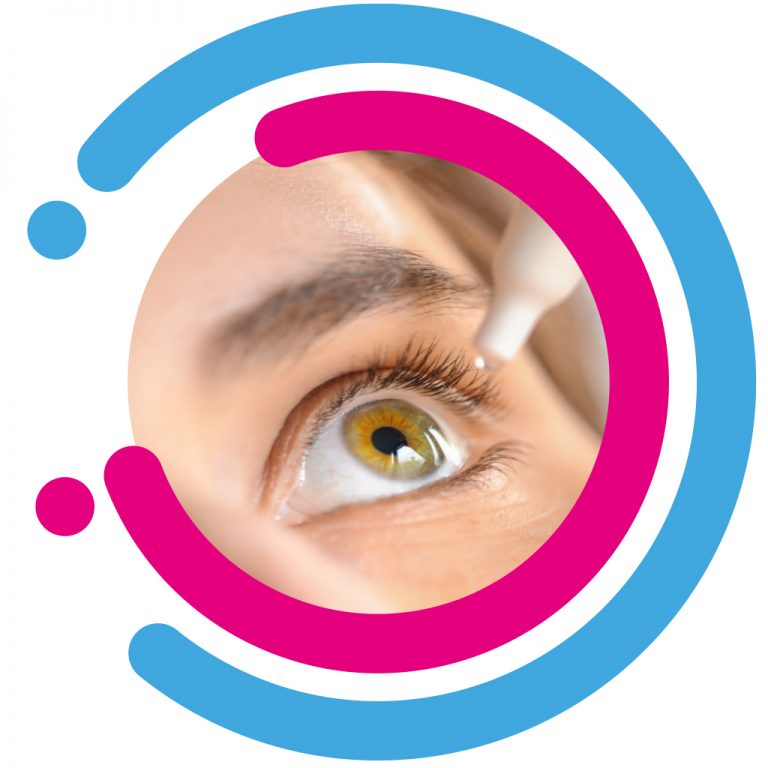Dry Eyes & Dry Eye Syndrome
Dry eyes occur when the eyes either don’t make enough tears, or the quality of the tears produced is reduced, which means the tears can evaporate rapidly from the surface of the eye, allowing the eye to dry. Often, the reduced tear quality is a result of blockage or inflammation of the oil glands within the lid margin. When the surface of the eyes dry out, the eyes become inflamed. They appear red, and the whites of the eyes can appear to be pink and swollen. Normally, the eyes become very irritable. When seen on a microscope, using a fluorescent dye called fluorescein and a special cobalt blue light, the denuded surface areas can be seen as green specks on the surface of the eye.

Dry eyes can be divided into two broad categories.
If the main problem is a lack of tear production, then the term ‘keratoconjunctivitis sicca’ or ‘aqueous deficiency’ is used. However, if the main problem is poor quality of tears (but plenty of them) as a result of inflammation or blockage of the oil secreting glands in the lid margin, then the condition is called ‘obstructive meibomian gland disease’, more commonly referred to as blepharitis.
It is more common in women than men, and is found most commonly in the over 60s age group. However, it can happen at any age.
The symptoms can be extremely variable, causing anything from mild irritation to severe discomfort.
Symptoms include
- Foreign body sensation/feels like something is in the eyes
- Eyes feel ‘gritty’ – often worse in the mornings
- Blurred vision
- Burning sensation in eyes
- Irritable eyelids
- Light sensitivity
- Redness of the whites of the eyes
- Painful eyes
- Excessive watering

This a paradox which is explained as follows:
Blinking spreads a tear film over the surface of the eye – the eyelids do the opposite to what a windscreen wiper does on a car. The eyelids spread a thin film of tears over the front of the eye. When there are not enough tears, or if the quality of tears is poor, the surface of the eye becomes dry, and this causes inflammation.
Special receptors on the surface of the eye are then stimulated by this inflammation, which causes a ‘reflex tear production’. This leads to the main tear glands to literally ‘switch the tap on’ in an attempt to wet the dry surface. The result is often the production of excessive watery tears (as opposed to oily tears), which results in watering of the eyes.
- Ageing over 60’s are the commonest group to suffer
- Hot, dry or windy climates – causes evaporation of tears
- Inflammatory diseases – e.g. Rheumatoid arthritis affecting joints, is associated with higher risk of dry eyes.
- Side effects from medications – e.g. The oral contraceptive pill

Normally dry eyes causes no visual deterioration. However, in severe cases where the eye is allowed to dessicate, the cornea may scar and this could cause reduced vision.
There is no absolute ‘cure’ for dry eye syndrome. However, most people can get significant relief from symptoms using a variety of treatments and measures.
Lid Margin Hygiene
Lubricants
Tear duct surgery
Other measures
‘Think Blink’
Humidifiers
Get in touch
Please contact us if you have any queries or questions about our eye examination and related issues, we would be most happy to advise you.

